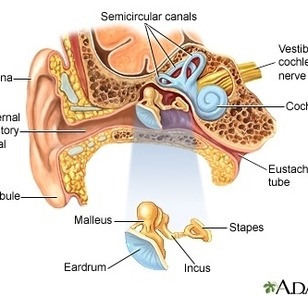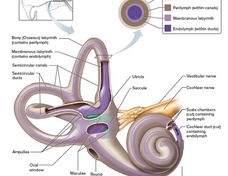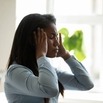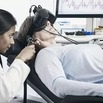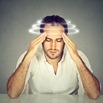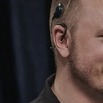Hearing & Vestibular Systems
Side Image: Anatomy of Auditory System (click to enlarge)
Hearing loss can occur in one or both ears and ranges from mild to severe. It can occur at any age, but it is most common among people who are over 50 years-old.
Conductive Hearing Loss occurs when the ability to conduct sound from the external and middle ear into the inner ear is reduced or lost. This can be caused by ear wax build-up, infection, trauma or other issues. It is rare but easily diagnosed and treatable.Sensorineural Hearing Loss occurs in the inner ear, and it can be caused by aging, trauma, and excessive noise exposure, among other things. It is treated with hearing aid technology or other assistive devices.
Bottom Image: Anatomy of Vestibular System (click to enlarge)
The Vestibular System (Semicircular Canals, Saccule, Utricle, & Ampullae) provides the sense of balance and the information about body position that allows rapid compensatory movements in response to both self-induced and externally generated forces. Treasure State Hearing has one of the most advanced vestibular testing systems in the entire Northwest. This equipment allows us to collect vital diagnostic information to help accurately diagnose vestibular disorders (Rotational Chair, VNG, Air Calorics, Electrocochleography, VEMPs, Oculomoter, etc.). Vestibular testing can be scheduled at our office but an audiogram with tympanometry and a medical referral is required prior to testing.
